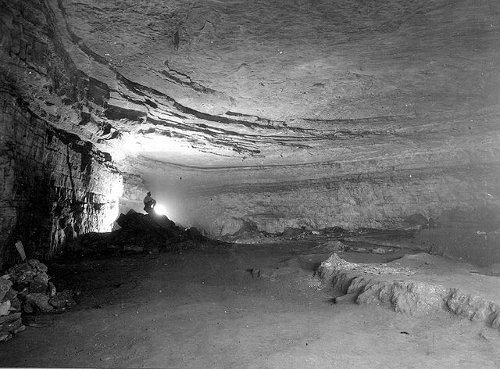
In 1839, Louisville physician John Croghan opened a tuberculosis hospital inside Kentucky’s Mammoth Cave. Thinking that the steady temperature and humidity would help restore his patients, he built a few small buildings deep inside the cave, and a number of patients moved in for several months. A guide from the period reads:
Immediately beyond the Great Bend, a row of cabins, built for consumptive patients, commences. All of these are framed buildings, with the exception of two, which are of stone. They stand in line, from thirty to one hundred feet apart, exhibiting a picturesque, yet at the same time, a gloomy and mournful appearance. They are well furnished, and without question, would with good and comfortable accommodations, pure air and uniform temperature, cure the pulmonary consumption.
But morale in the sunless environment was low, and the close air made their condition worse. Patient Oliver Hazard Perry Anderson wrote, “I left the cave yesterday under the impression that I would be better out than in as my lungs were constantly irritated with smoke and my nose offended by a disagreeable effluvia, the necessary consequence of its being so tenanted without ventilation.”
Croghan ended the experiment after five months, and himself died of TB six years later.
(Thanks, Sandy.)
